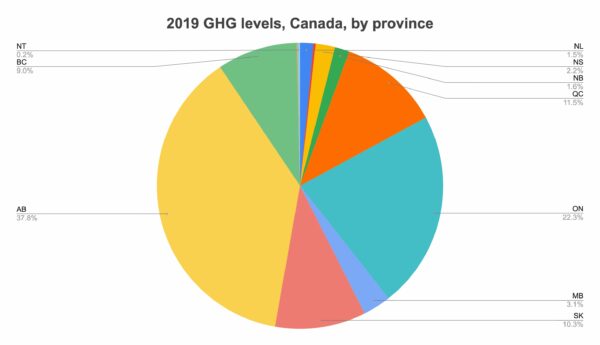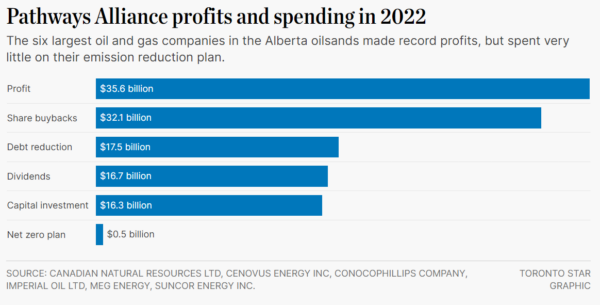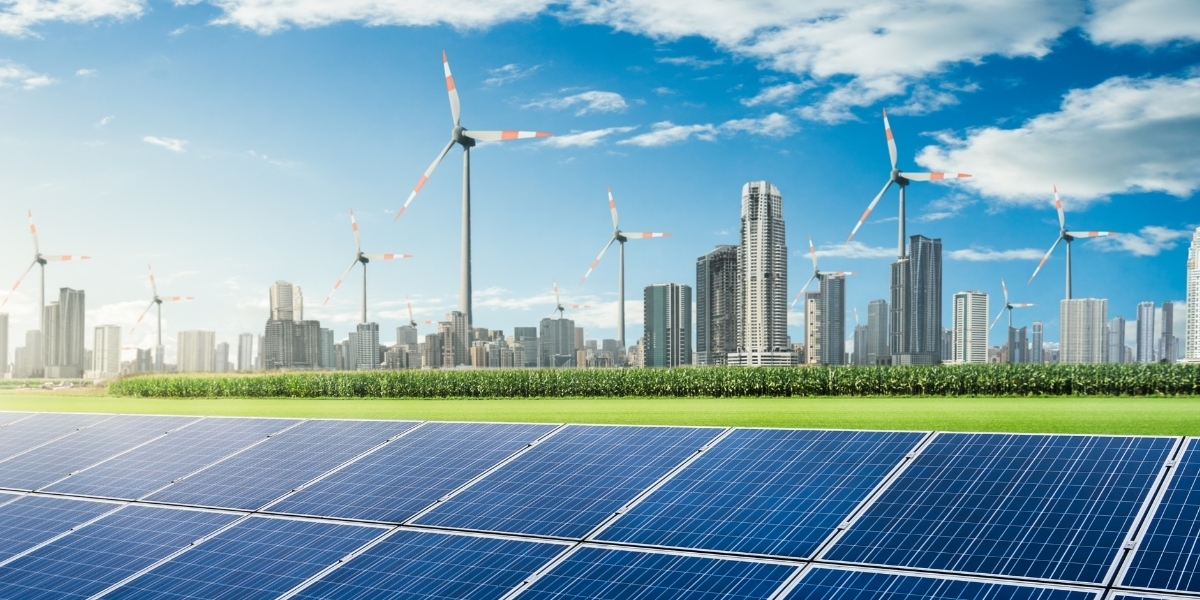The Pembina Institute claims Alberta, Canada’s largest oil and gas producer, can lower carbon pollution from its electricity grid by 2035 without breaking the bank.
The think tank said that if Alberta invests more in wind and solar energy, it can achieve this dream.
But does the provincial government share the same dream?
Premier Danielle Smith has long been at odds with Prime Minister Justin Trudeau about reducing the province’s carbon pollution. She claims Trudeau’s plans will lead to job losses and be expensive.
The federal government plans to introduce regulations this summer that will require power companies to reduce pollution and make Canada’s electricity emissions-free by 2035.
Most of Canada’s power already comes from renewable sources like hydro and nuclear energy. Then there is Alberta, which still relies on burning natural gas.


As a result, Alberta pumps out almost half of Canada’s carbon pollution resultinng from electricity generation.
The province is taking some steps to reduce its emissions, but is it enough?
Alberta claims it is on track to replace coal-fired power generation with natural gas plants this year. We’re not so sure.
The good news is three-quarters of the new wind and solar energy capacity built in Canada last year was in Alberta.
“Alberta is at an inflection point in the evolution of its electricity grid. A decarbonized grid is key to unlocking economic opportunities,” said the report by Will Noel and Binnu Jeyakumar of Calgary-based Pembina.
Pembina and the University of Alberta made six different models to see how Alberta could achieve this. In all models, renewable energy became the largest source of electricity by 2035.
Better yet, the models also showed that making the grid emissions-free would cost billions of dollars less than what the Alberta Electric System Operator predicted.
The Drawbacks Of A Renewable Future
Cutting carbon pollution helps to fight climate change, and one way to reduce emissions is by using electricity instead of fossil fuels for things like buildings and vehicles.
However, Pembina claims this would signifcantly increase the demand for emissions-free power.
There are naysayers in Canada. Alarmists like the Coalition of Concerned Manufacturers and Businesses claim Canada’s transition to an emissions-free grid could drive up power costs as much as half again.
Despite these claims, Pembina suggests that the province commits to achieving the net-zero goal by 2035. If Alberta reaches a net-zero emissions grid, it would become an exporter of electricity instead of an importer.
This means that it could sell electricity to other places. Additionally, the cost of electricity for households would decrease because wind and solar energy have lower operating costs.
To turn this green dream into a reality, Pembina suggests the province establish regulatory requirements and financial supports. This includes implementing policies to regulate power produced by energy companies.
Pembina also urges Alberta to consider trading electricity with British Columbia and the state of Montana, and focus less on expensive carbon capture technology to reduce emissions.
But instead of setting rules to promote cleaner production, the Smith government is giving handouts to oil companies making billions in profits.
Smith’s Liability Management Incentive Program (LMIP) – formerly the R-Star project -will give oil companies a break on royalty rates if they clean up inactive wells. The program will provide up to $100 million in credits to these companies over three years.
At the end of the day, that money will be coming out of your pocket to help companies clean up their mess. If it sounds like a scam, that’s because it is.
The Pathways Alliance, consisting of the six largest oil and gas companies, couldn’t care less about net-zero goals. In 2022, these companies spent less than $1 billion on a net-zero plan.
The big oil companies talk about cutting their carbon pollution, but they don’t walk the talk (see the last column in the chart below).


To put things into perspective, these companies earned more than $35 billion in profits that year.
Talk about stingy.
NDP MLA Marlin Schmidt was quick to criticize the LMIP in March, stating, “I’m hearing from Albertans who say it doesn’t matter what the premier calls it or the size of the down payment on the $20 billion, it’s still a scam.”
Former energy minister Peter Guthrie was quick to point out that the NDP’s hands aren’t clean either.
In 20017, the NDP government offered oil companies a $235 million loan to accelerate the cleanup of orphan oil and gas wells.
Unfortunately, pointing fingers doesn’t get anything done. What Alberta needs is real climate action, not carbon capture fantasies.






